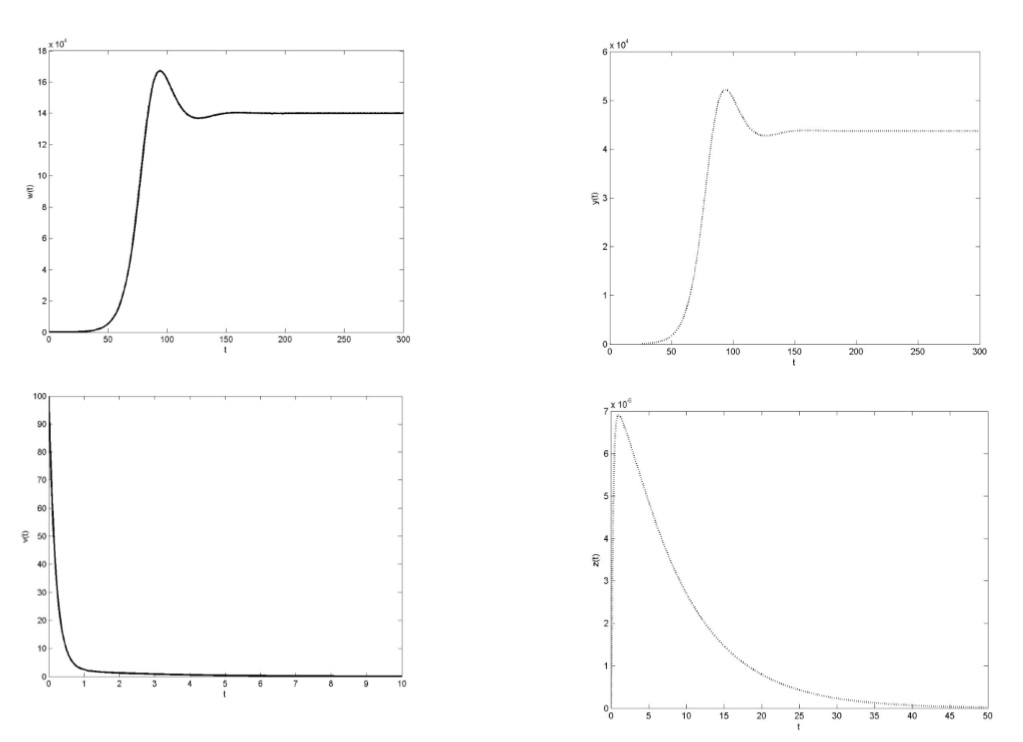Inhibición de VIH-1 por GB Virus C
DOI:
https://doi.org/10.33017/RevECIPeru2011.0006/Keywords:
VIH, GB Virus C, Inhibition, mathematical model, stability.Abstract
GB virus C (GBV-C) is a lymphotropic, positive-RNA virus. GBV-C has been found in considerable amounts in healthy blood donors and, in average, it is found in 1.7% of the population. Its transmission is very similar to HIV and HCV i.e. by parental and sexual transmission. The possibility of transmission via breastfeeding has been suggested. GBV-C replicates in mononuclear blood cells, mainly in T (CD4+ and CD8+) and B cells. HIV is a world health problem that until today we don’t have a cure or vaccine. GBV-C and HIV interactions have prove that coinfected patients have slower progression to AIDS and longer survival, in vitro coinfection experiments GBV-C makes a inhibition of HIV replication in the range of 78% – 98%, but there is no description of the specific mechanism of this interaction. In this paper, we propose a mathematical model describing the inhibition of HIV by GBV-C. This model consists of six non-linear differential equations system taking into account healthy cells, cells infected exclusively by HIV or GBV-C, free GBV-C and HIV viral particles and by cells coinfected by GBV-C and HIV. The analysis reveals the existence of four equilibria: one equilibrium free of any infection, another one infected by GBV-C, one HIV infected equilibrium and an equilibrium of coinfected cells. A local stability analysis was carried out as well as numerical simulations with parameter values taken from the literature.


